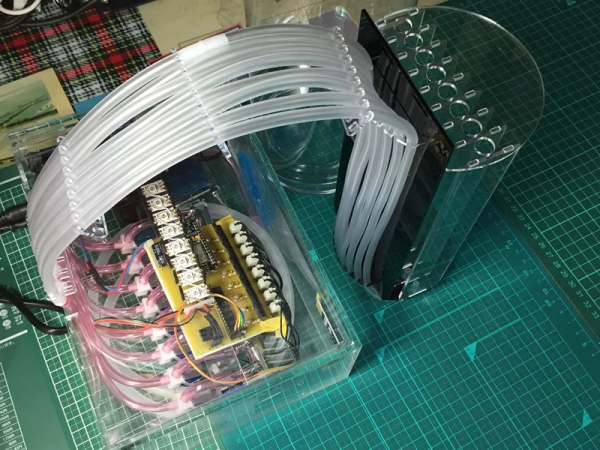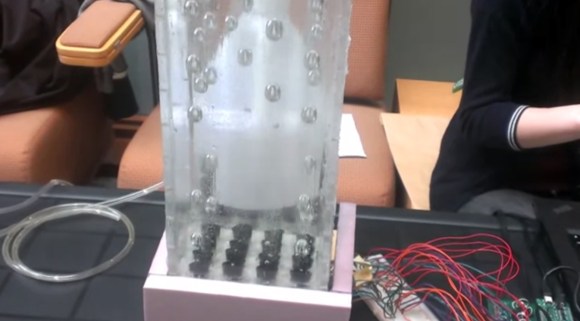When [DonHo] sang about tiny bubbles, he probably wasn’t thinking of them embedded in glycerine. But that’s where the bubbles in [ShinodaY]’s clock reside. The viscous fluid holds the bubbles better allowing the time to be read more easily. You can watch the relaxing display in the video below.
The theory of operation is simple and reminds us somehow of a reverse Tetris game. Solenoid valves at the base release air bubbles to form a row of the display. The bubbles rising makes room for the next row. The display has as many columns as there are air outlets at the bottom. Spacing the bubble pixels is as simple as adjusting the timing between air bubbles.














